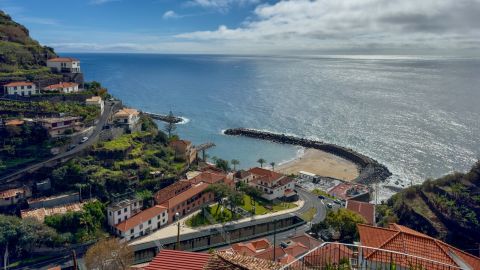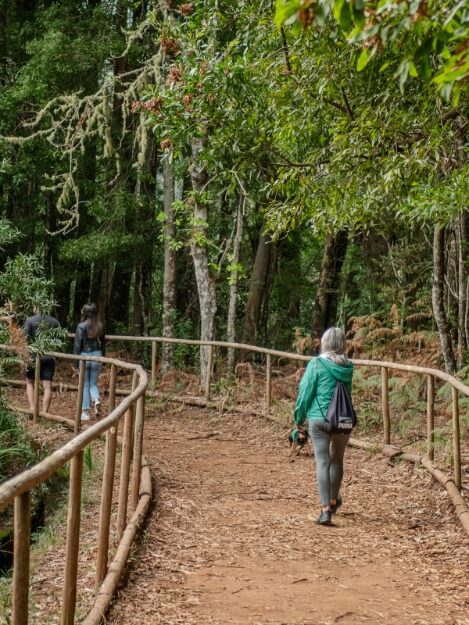In a world that moves too fast, more and more travelers are choosing to stop, reconnect with their...

- COUNTRIES:
- Spain
- ⋅
- Portugal
- ⋅
- See all Countries
- REGIONS:
- Galicia
- ⋅
- Madeira Islands
- ⋅
- Algarve
- ⋅
- Balearic Islands
- ⋅
- Catalonia
- ⋅
- Basque Country
- ⋅
- Andalusia
- ⋅
- Lisbon and Tagus Valley
- ⋅
- See all Regions
- CITIES:
- Vigo
- ⋅
- Santiago de Compostela
- ⋅
- Funchal
- ⋅
- Porto
- ⋅
- Granada
- ⋅
- Lisbon
- ⋅
- A Coruña
- ⋅
- Faro
- ⋅
- Cangas do Morrazo
- ⋅
- Moaña
- ⋅
- Baiona
- ⋅
- See all Cities
GRANADA TRAVEL GUIDE
Recommended destinations to discover selected by highly-rated travel experts.
GRANADA
Why Travel to Granada?
Granada, situated near the spectacular Sierra Nevada mountains in southern Spain, is one of the most popular destinations in Spain. With its deep Moorish roots, spectacular mountain backdrop, and Christian, Jewish, and Muslim heritage, it offers a cultural and architectural journey like no other. But what truly sets Granada apart is its warm hospitality, its exceptional food scene rooted in Andalusian tradition, and its unique wine culture.
Step Into Granada´s Living History
Granada is known for its iconic monument: the Alhambra, a majestic 14th-century palace-fortress set high on Alhambra Hill. Once home to Nasrid sultans, the complex includes the beautifully decorated Palacios Nazaríes, the military fortress of the Alcazaba, and the lush Generalife gardens, once the sultans’ summer retreat. From here, you can cross the city to the Albaicín, Granada´s ancient Moorish quarter, a maze of whitewashed houses, narrow streets, and hidden gardens.
On the opposite side of the Alhambra, Sacromonte hill known for its flamenco-filled cave homes and deep-rooted gypsy culture. In the heart of the city, you’ll find Christian masterpieces like the Granada Cathedral, a prime example of Spanish Renaissance architecture, and the Royal Chapel, the final resting place of Queen Isabel and King Ferdinand, the Catholic Monarchs who reconquered the city in 1492.
Taste the Flavors of Granada
Granada is one of the few places in Spain where free tapas still come with your drink, a cherished tradition that locals guard fiercely. You can order a glass of wine, vermouth, or beer, and you will get anything from jamón serrano to grilled eggplant or local migas. This makes Granada one of the best cities in Spain for an authentic and budget-friendly tapas crawl.
The cuisine here blends Moorish and Andalusian flavors, featuring spices, olive oil, and ingredients like almonds, citrus, and saffron. Don´t miss Remojón Granadino (a refreshing orange and cod salad), hearty stews like Olla de San Antón, or sweet treats like Piononos from nearby Santa Fe, which are small sponge cakes soaked in syrup and crowned with creamy custard.
Granada also lies within the Altiplano wine region, known for its bold reds and fresh whites from native and international grape varieties. The nearby Guadix and Contraviesa-Alpujarra wine-growing areas offer wineries you can visit for tastings, with stunning views over terraced vineyards and olive groves.
Our food experts have chosen the best tour operators offering tours with food, wine, and walking holidays in Granada. You can check our full list of things to do in Granada: top food tours to Granada and top boutique hotels in the sections of the travel guide to Granada.
Population: 246,401 (2025)
THE 10 BEST DESTINATIONS TRAVEL GUIDES
Discover our top destinations recommended by our highly-rated tour experts.
RECOMMENDED TOURS, EXPERIENCES & TASTINGS
Our top 10 best tours, experiences & tastings in the destination selected by our experts. Slow Way Food Tours, Green Walking Holiday and Exclusive Food & Wine Tours/Tastings.
Southern Spain to Northern Portugal: A...
A 15-day private journey through Spain and Portugal, blending culture, history, and refined travel. Enjoy expert-guided tours, handpicked hotels, and regional cuisine from Andalusia to Lisbon and the Douro Valley, all seamlessly arranged for your comfort.
2 User Reviews
Private Driver Chauffeur with Car Services and...
Private Chauffeur/Driver Car services in Granada, Andalusia. During your stay in Granada have a private English-speaking chauffeur at your disposal to take you around the city. Choose from our selection of vehicle types (eg. Mercedes Benz E-Class Sedan, Minivan).
RECOMMENDED HOTELS
Our travel experts have researched the best hotels in the destinations we cover. Stay in unique accommodations from modern city centre hotels to wine country manor house with amazing food & wine. If you can not find a suitable option just let our experts know and we will suggest something different for you.
No results found
TRAVEL JOURNAL
In our Travel Journal read posts and articles about upcoming tours, expert reviews of hotels, wineries, destinations, etc...
 Home: Blog
Home: BlogTraveling through Spain and Portugal is a unique experience, filled with unmatched history, culture, and...












